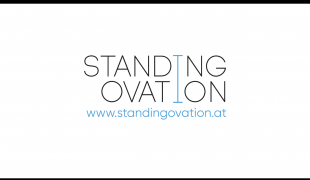- 8708
- 551
- 10
- 8
- 0
- Help Ukraine
About the solution
Celeste, born in 1961, had a stroke in 2010 that left her paralyzed on the left side. She uses a cane to walk distances but one day in the hospital she grabbed a handrail and took off.
“I thought, ‘Wow!’ And all of a sudden a light went off. I said, ‘She needs a moving handrail, a portable handrail that moves,” Teaby said. And that’s how “Celeste Power Cane” was born.
The doctors told Celeste she would never walk again. But she never accepted that. “I said, well, that’s not what I’m going to hear,” she said. About six months later Celeste was walking.
Teaby designed and built three versions of the power cane so far, all powered by a cordless drill. Celeste tested it out on a hill and said “It gave me a little momentum and a little strength to get up the hill.”
Her father customized the power cane with a basket for her books.
He said his ambition is to keep working on the fourth design. “It hasn’t been developed, just in CAD, and bring some of these to the Vancouver Stroke and Brain group and let them look at them and maybe try them.”
“Everyone is asking, ‘Do you have a patent?’ And I say no, I didn’t do this for the money. I did this for her.”
Adapted from: http://bit.ly/1Ra9dPb
What about you, do you have any solutions? Please share them with the Patient Innovation community!
https://www.youtube.com/watch?v=kAslE8f0ANI
这些解决方案不应包括使用药物,化学品或生物制品(包括食品);创伤性设备;冒犯性的,商业或内在危险的内容。该解决方案未经医学验证。请谨慎进行!如果您有任何疑问,请咨询健康专家。
DISCLAIMER: This story was written by someone who is not the author of the solution, therefore please be advised that, although it was written with the utmost respect for the innovation and the innovator, there can be some incorrect statements. If you find any errors please contact the patient Innovation team via info@patient-innovation.com
-
-
240
-
0
-
2639

Collaborator James Leckey makes equipment to improve the quality of life and social inclusion of children with special needs
MOVING IN A WHEELCHAIR: Moving using a wheelchair.
BODY BALANCE: Maintaining body balance
STANDING UP: Standing up from a seated position
Playing
Neuromuscular Disorders
Assistive Daily Life Device (to help ADL)
Walking Aid (wheelchair/walker/crutches)
Assistive Technology access
5 Senses support devices: (glasses, hearing aids, headphones...)
Restoring mobility
Promoting self-management
Managing Neurological Disorders
Promoting inclusivity and social integration
Maintaining Balance and Mobility
Raise awareness
General and Family Medicine
Neurology
Orthopedics
Pediatrics
Physical Medicine and Rehabilitation
United States
-
-
-
257
-
0
-
3874

Peter & Bernhard created StandSmart, a dynamic standing aid that supports the legs and trunk that allows hands free for productivity.
WALKING WITH A WALKING AID: Walking with a walking aid
BODY BALANCE: Maintaining body balance
STANDING UP: Standing up from a seated position
Cooking
Assistive Daily Life Device (to help ADL)
Walking Aid (wheelchair/walker/crutches)
Restoring mobility
Managing pain
Promoting self-management
Preserving Organ Function
Promoting inclusivity and social integration
Maintaining Balance and Mobility
Preventing (Vaccination, Protection, Falls, Research/Mapping)
Orthopedics
Physical Medicine and Rehabilitation
Mobility issues
Solutions for Disabled people
Germany
-
-
-
543
-
0
-
8888

Man creates device to help to put on socks, shoes and even trousers
Grip
(SELF)-CARE: DRESSING: Dressing independently.
BODY BALANCE: Maintaining body balance
STANDING UP: Standing up from a seated position
Knee Deformity
Assistive Daily Life Device (to help ADL)
Strategy/Tip
Muscle weakness
Limited range of motion
Muscle pain or stiffness
Reduced grip force (grip)
Loss of muscle coordination
Muscle cramps or spasms
Joint deformity
Joint redness or warmth
Swelling or inflammation
Difficulty bearing weight
Muscle twitching
Difficulty standing from a seated position
Difficulty getting up from the floor
Numbness or tingling in the extremities
Joint pain or swelling
Restoring mobility
Promoting self-management
Preserving Organ Function
Rehabilitating After Stroke
Managing Neurological Disorders
Recovering from Traumatic Injuries
Maintaining Balance and Mobility
Preventing (Vaccination, Protection, Falls, Research/Mapping)
Caregiving Support
Internal Medicine
Neurology
Orthopedics
Physical Medicine and Rehabilitation
Rheumatology
Sports Medicine
Vascular Surgery
United States
-
 zh
zh